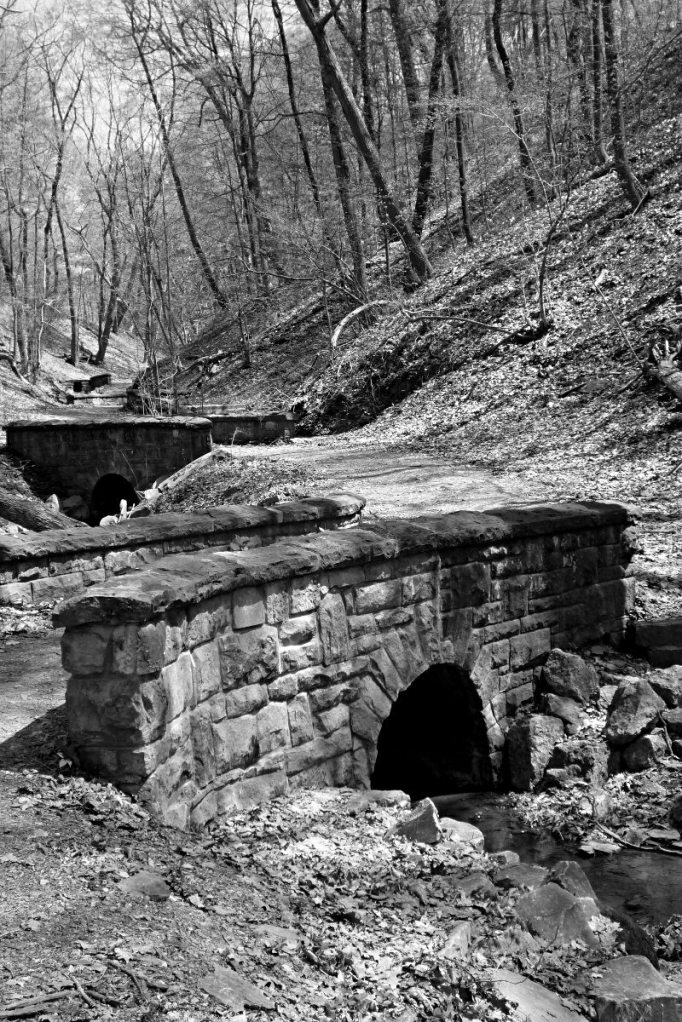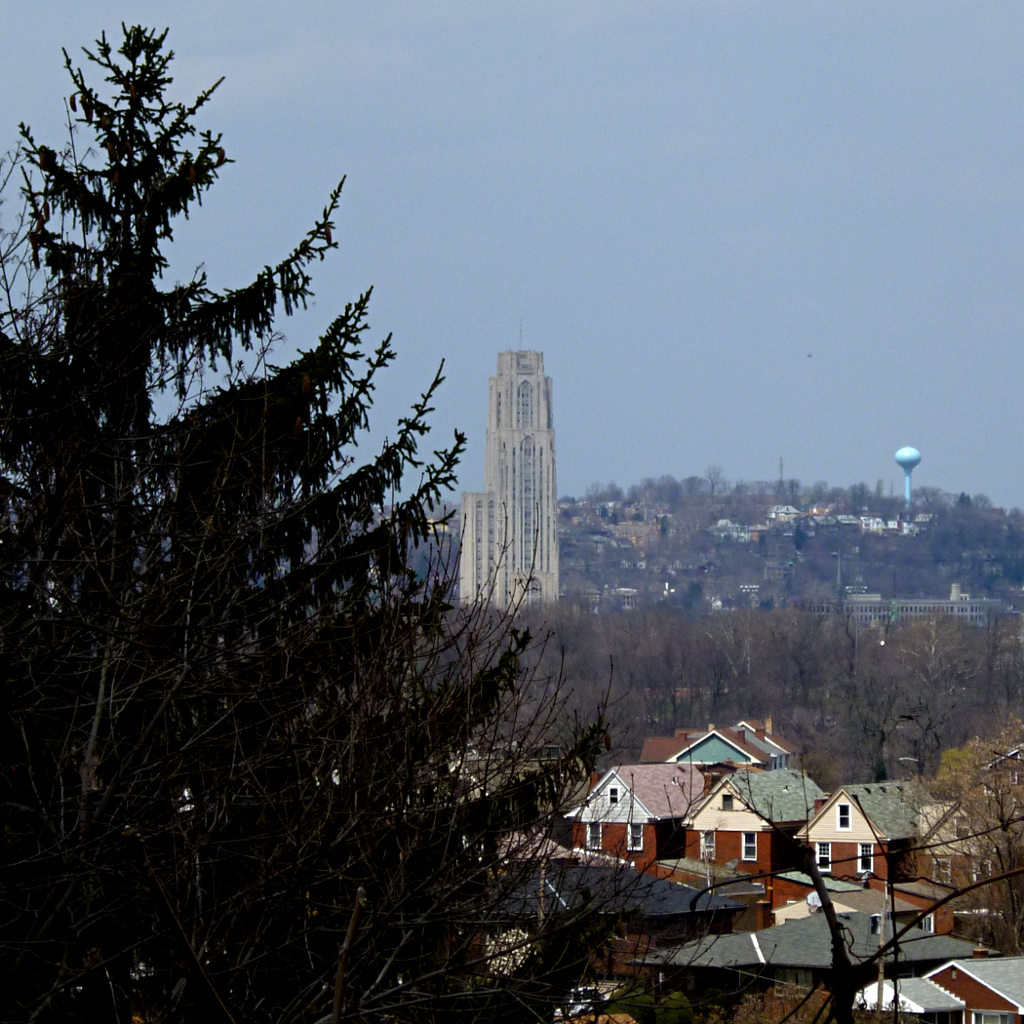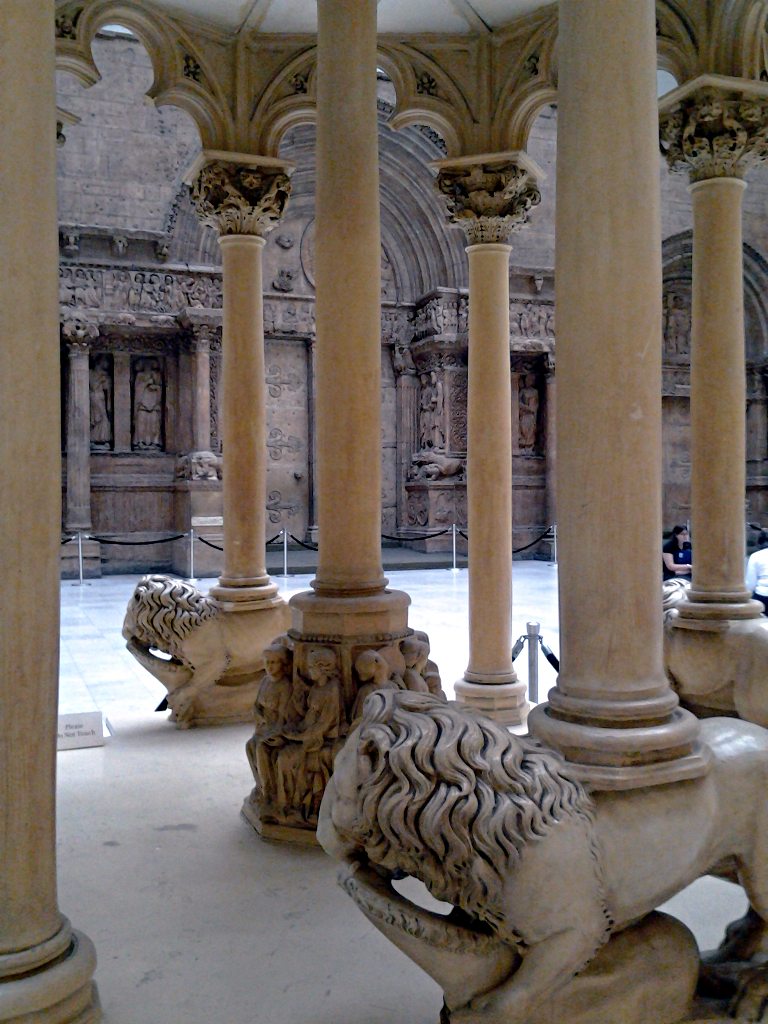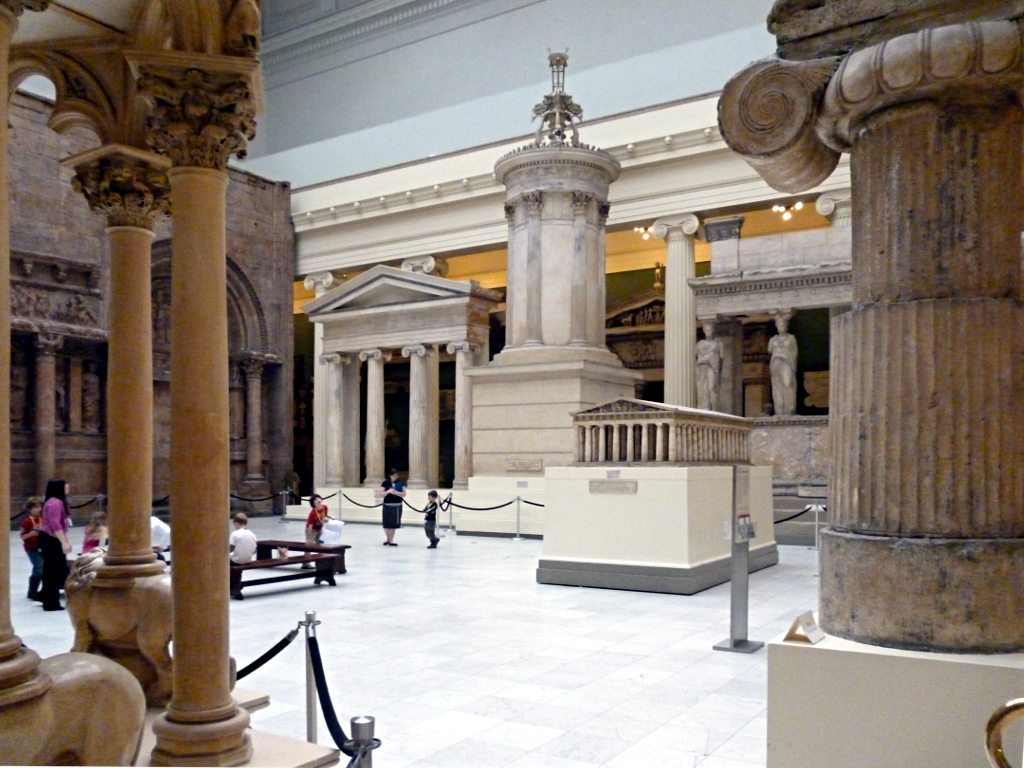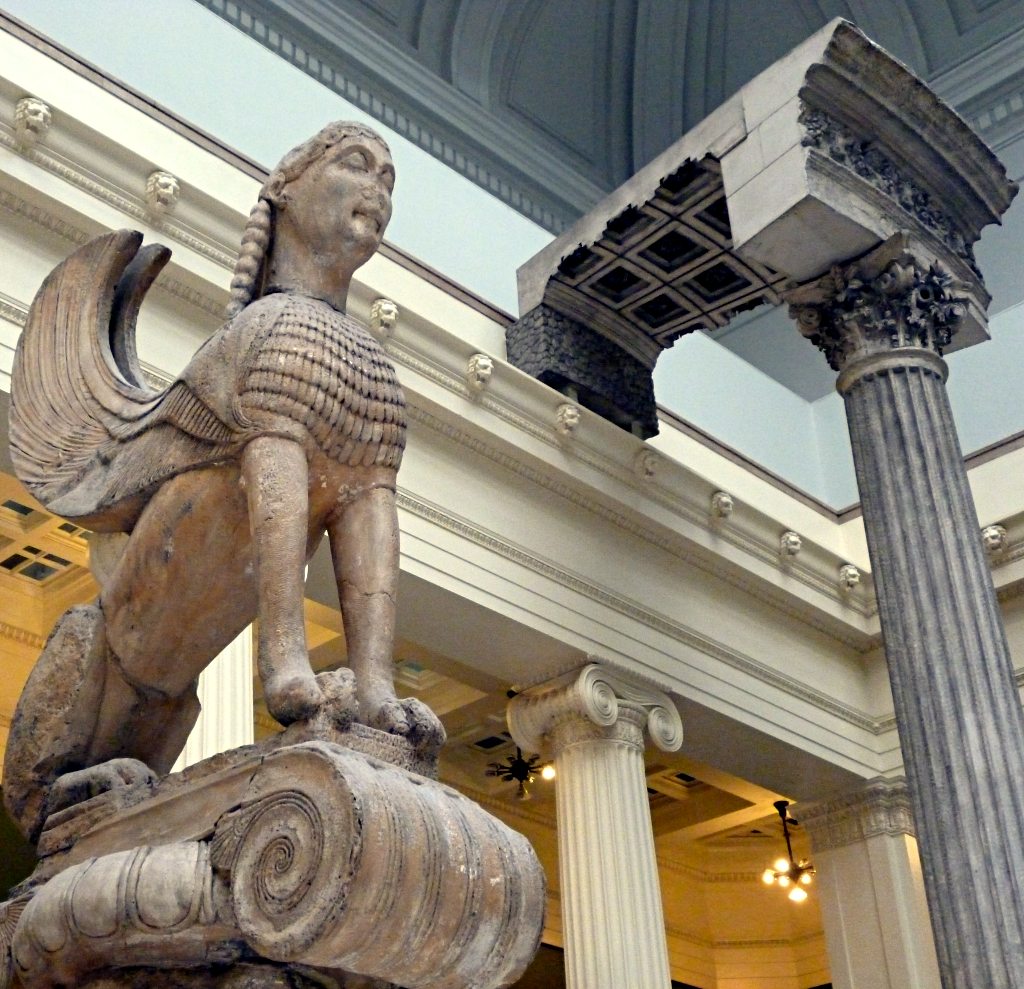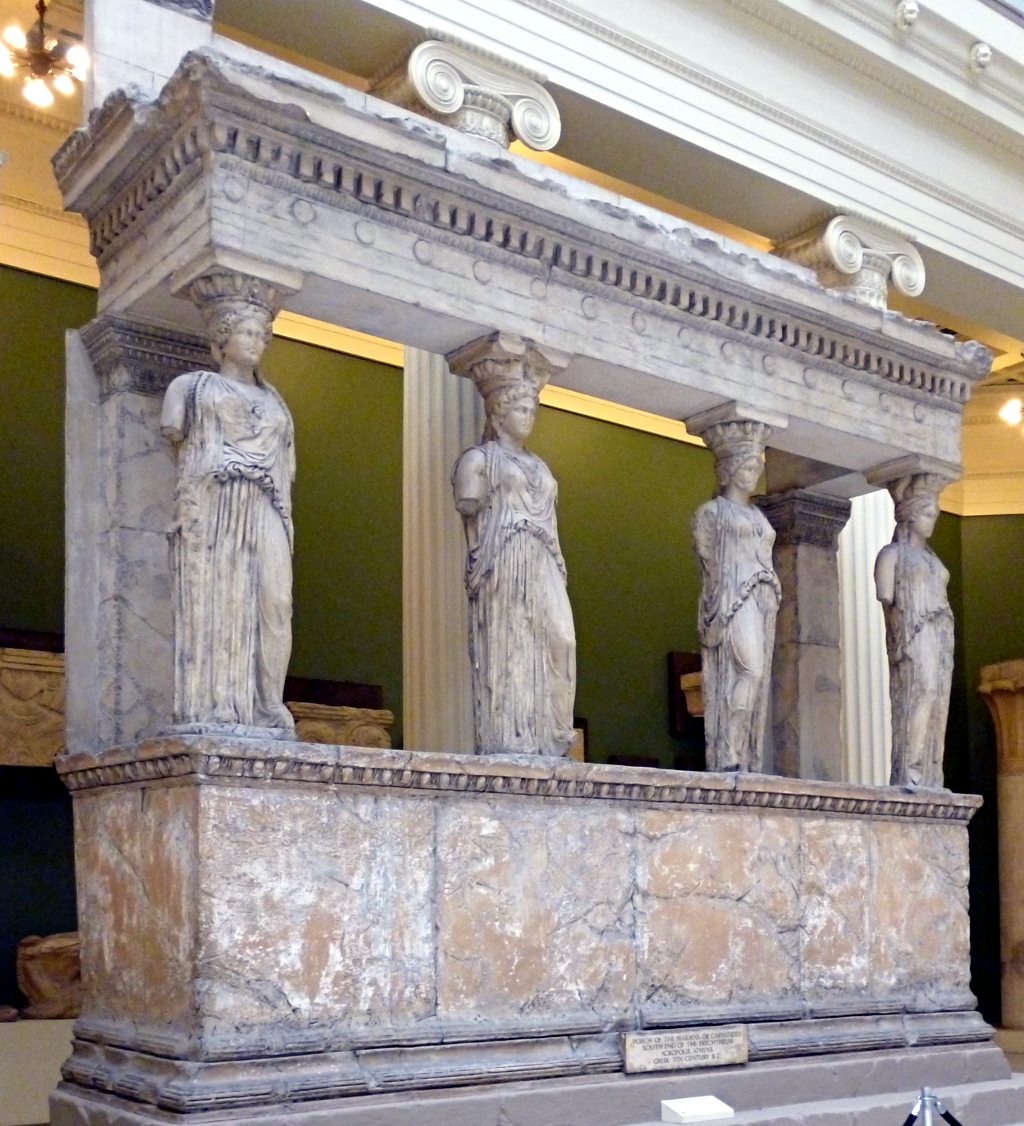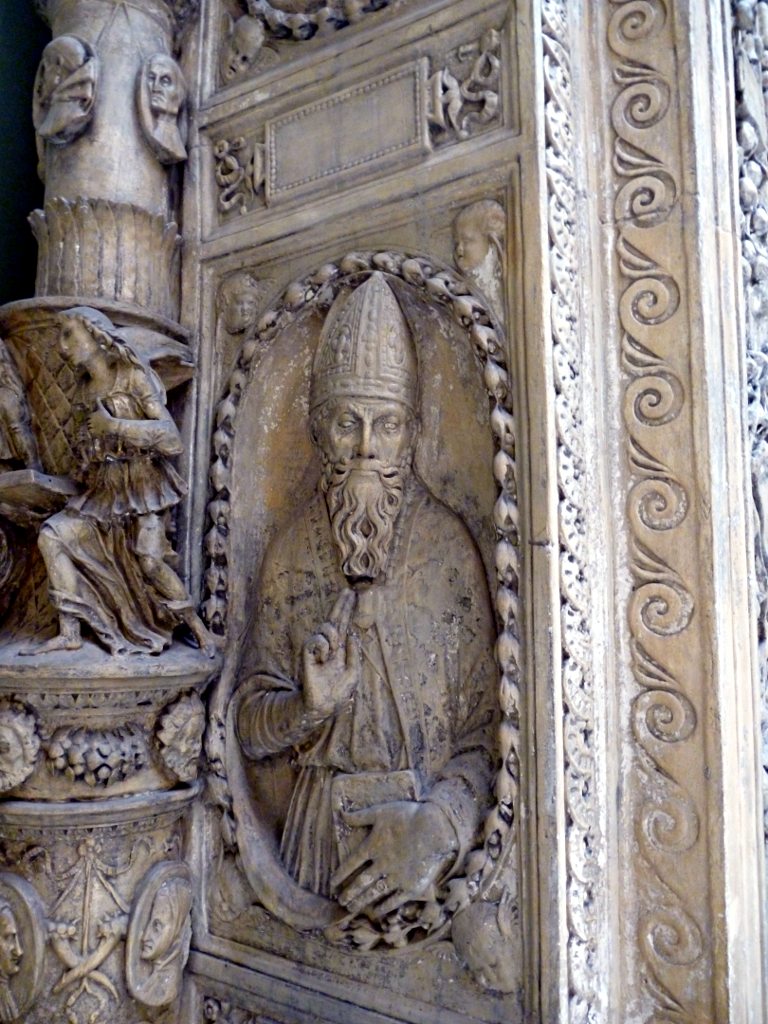It is not necessary to tell a Pittsburgher what the Nationality Rooms are, but for the benefit of visitors from foreign parts we explain that they are a set of classrooms in the Cathedral of Learning (which itself is such a wonderful absurdity that it requires some explanation, but not here) decorated in the styles of Pittsburgh’s various immigrant groups. Each is a unique work of art, and none more elaborate than the tiny Syria-Lebanon Room, the only one of the lot not usually open to the public.
-
Nationality Rooms: Syria-Lebanon
-
Cathedral of Learning in Black and White
-
Your WPA at Work in Schenley Park
-
Panther Hollow Lake
-
Cliffside Rowhouses in South Oakland
-
Cathedral of Learning from Greenfield
-
Grand Staircase, Carnegie Museum
Originally the main entrance and still the centerpiece of the vast Carnegie establishment in Oakland, this three-storey open space is decorated with murals by John White Alexander depicting the Apotheosis of Pittsburgh. Most museum visitors ignore them while hurrying on past to the dinosaurs, but the mural group is actually one of the museum’s great artistic treasures. It’s worth spending half an hour in the Grand Staircase picking out the details, like the faces of the damned in the billowing smoke.
-
Hall of Architecture, Carnegie Museum
This is the most breathtaking single room in the Western Hemisphere. That statement is likely to provoke some opposition, but Father Pitt is willing to defend it.
In the late nineteenth century, many museums collected plaster casts of the great monuments and sculptures of the past. The casting preserved the minutest details of the surface in three dimensions, so that a museum visitor can study every chisel mark on a famous Romanesque facade without having to hop on a steamer and travel to Europe.
In the twentieth century, the cult of originality persuaded most museum curators that these plaster casts were worthless. Almost all the great collections were broken up and thrown out. Only three of them remain in the world, and only one of them—this one—is still in the space that was built to house it, never having been shuffled from one wing to another or stored for years under a highway overpass.
Now, at last, some of the more enlightened art historians are beginning to understand the value of the casts. Here a Pittsburgher can study the whole history of Western architecture from Egypt to the Renaissance without so much as crossing the Monongahela. But even more important is the fact that these casts are more than a century old. The twentieth century, with its corrosive pollution and horrendous wars, was more destructive to ancient monuments than any other century. But here we can see exact replicas of these monuments as they were before all the corrosion and destruction. This collection is a unique cultural treasure, worth crossing a continent or an ocean to see.
-
Hall of Sculpture, Carnegie Museum
The Hall of Sculpture was built in imitation of the interior of the Parthenon, with marble from the same quarry that supplied the marble for the famous Athenian temple. It was intended to house the Carnegie’s collection of plaster casts of famous sculptures, some of which still adorn the balcony, and some of which have been moved to the Hall of Architecture. On the floor below, staff are hanging transparencies from clotheslines. Why? We’ll find out when they’re done.
-
Cathedral of Learning Through a Window




